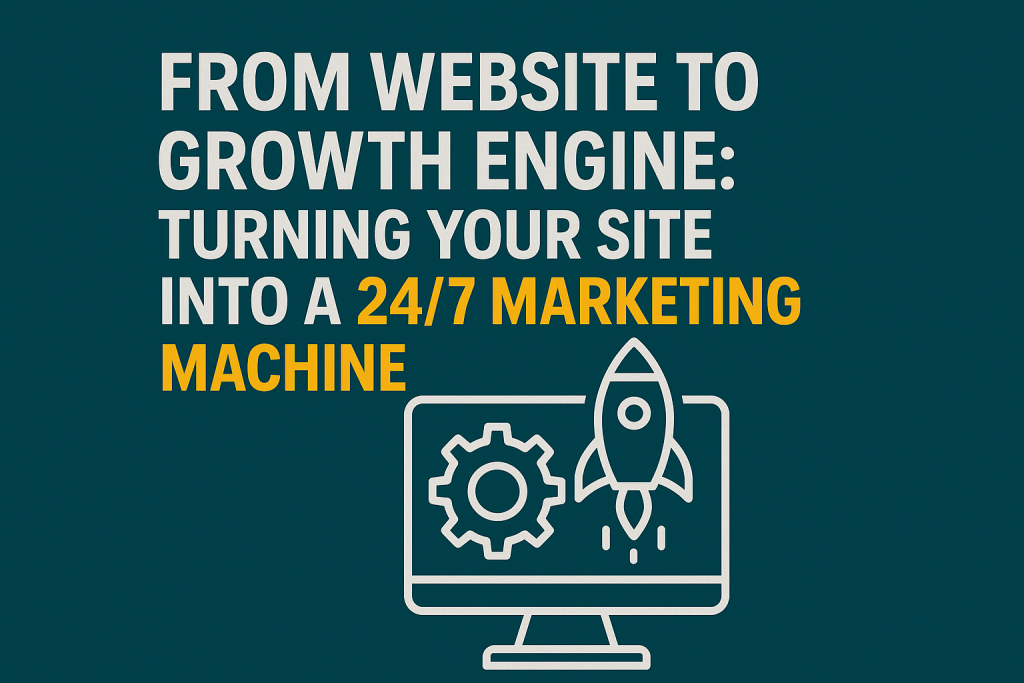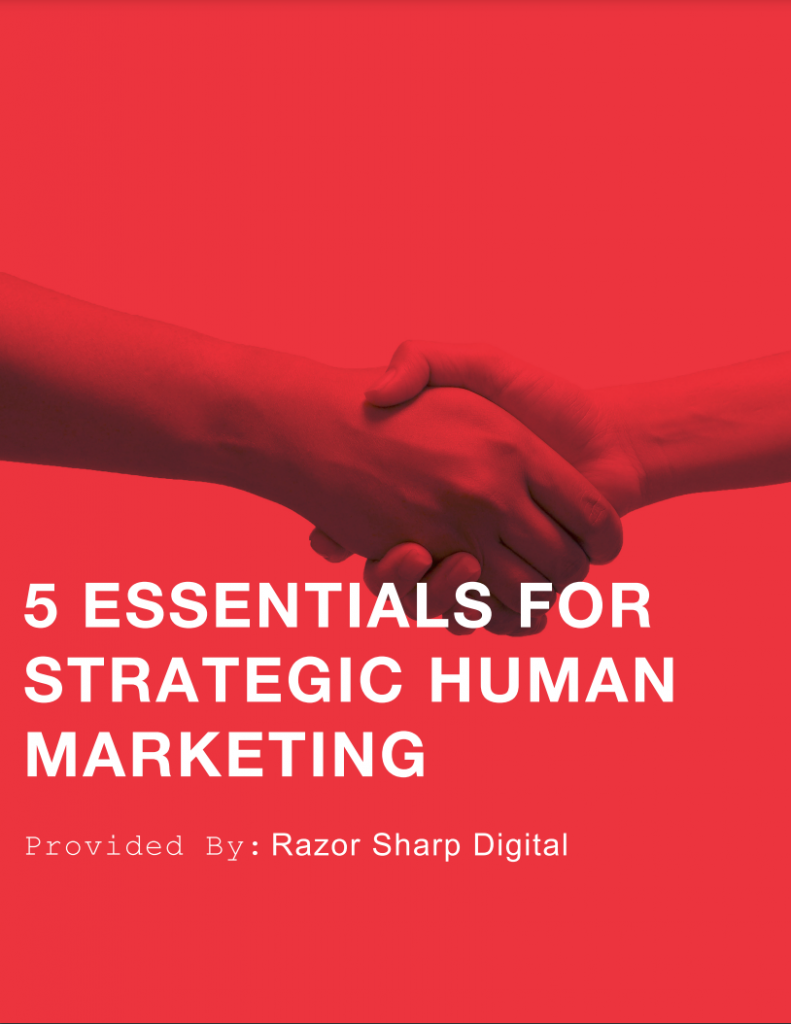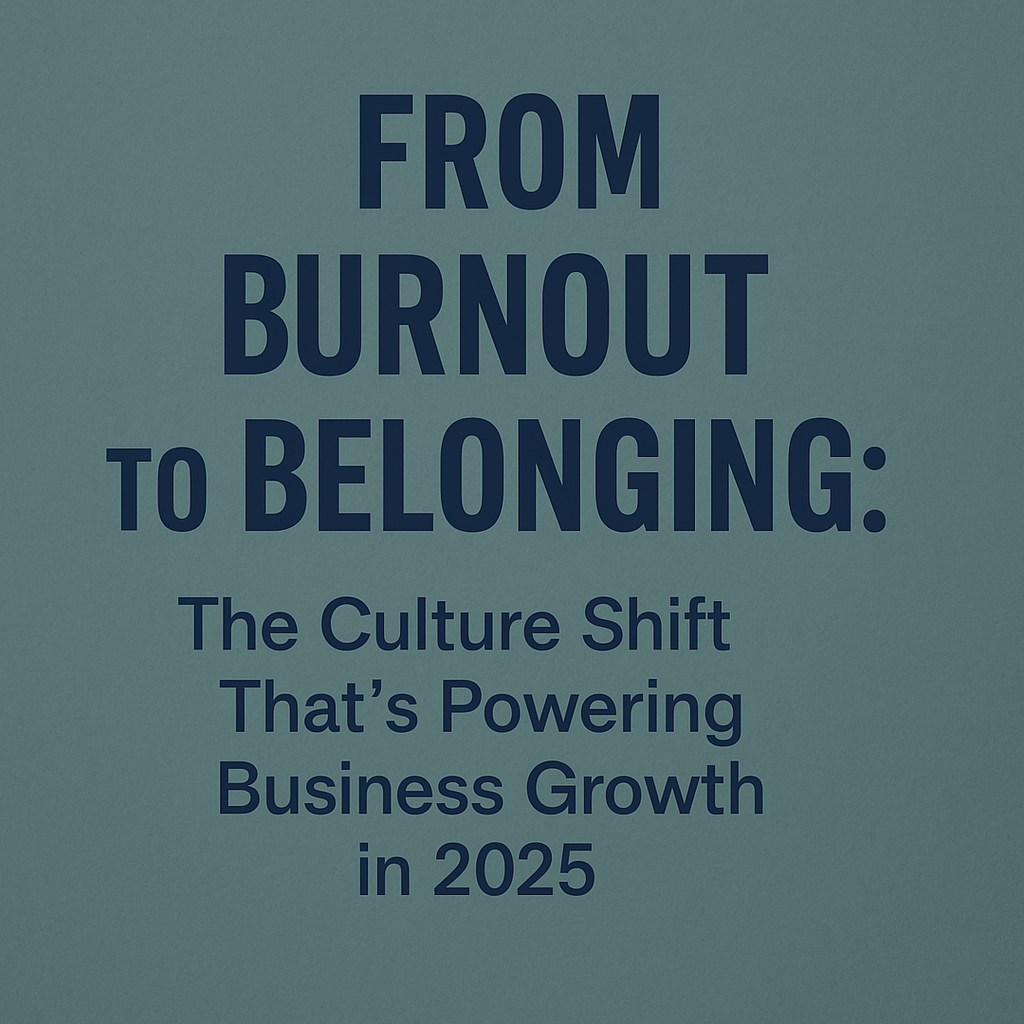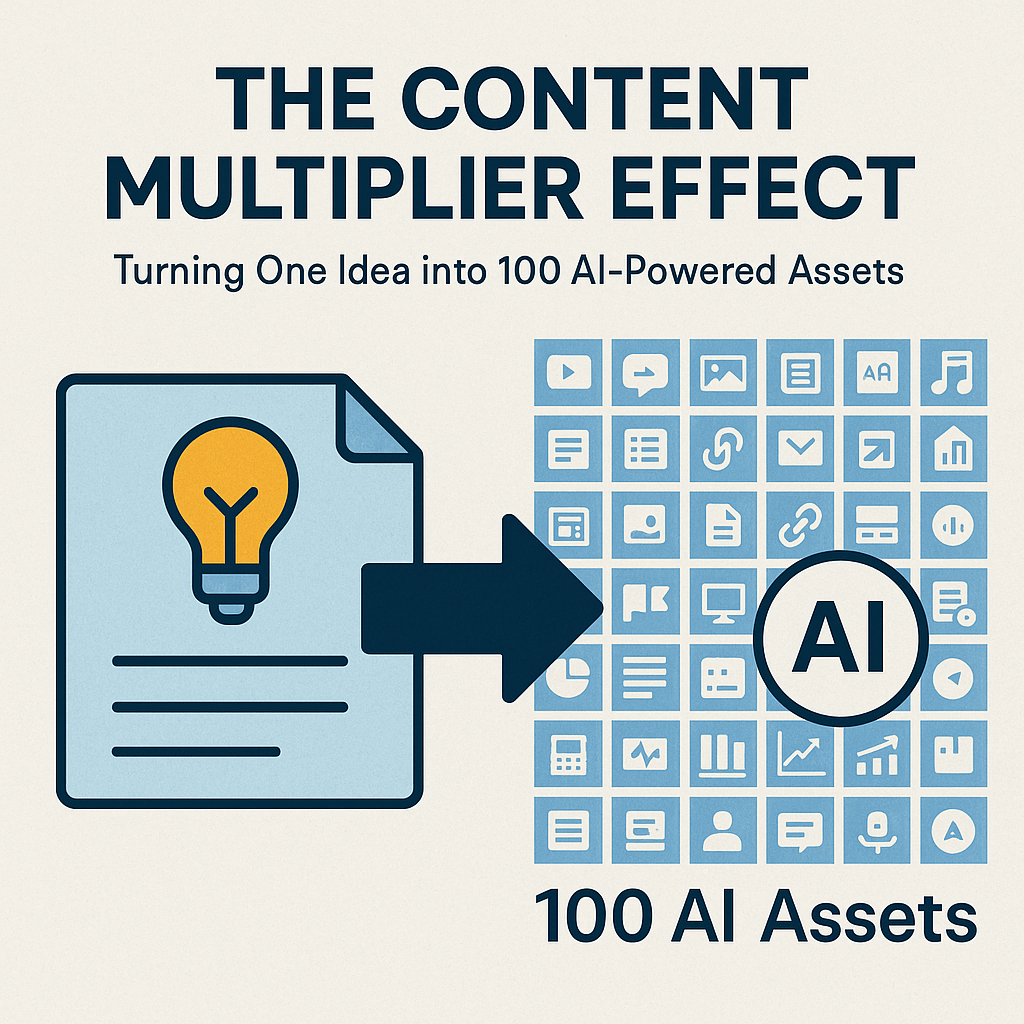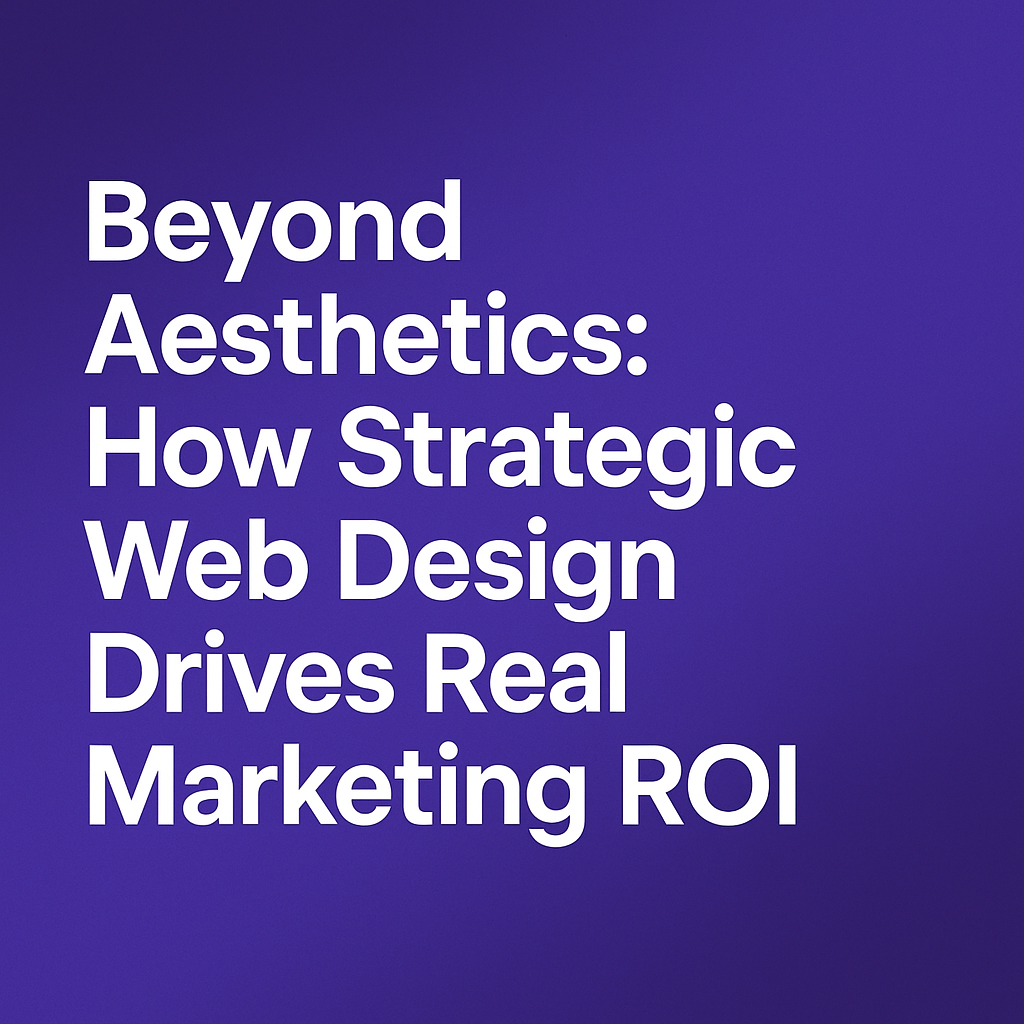In this article we’ll show how you can elevate your website from mere presence to true growth engine — a 24/7 marketing machine that works silently while you sleep, handles leads, nurtures prospects, and accelerates your business growth.
1. Why Most Websites Don’t Grow the Business
Let’s begin by diagnosing the problem: why so many websites underperform.
1.1 It’s treated as a brochure
Too many sites are designed to look good, but not to work. They display services, maybe a portfolio, contact form – but they don’t guide a visitor to take action. As one agency put it, “Your website should be more than an online brochure… it should guide visitors through clear messaging, build trust … and push them to take action.” adventtrinity.com+1
1.2 Traffic without conversion
It’s possible to get visitors, but if they leave without any meaningful engagement (email, signup, inquiry), then your site isn’t contributing to growth. As one guide notes: “If your website is getting more traffic but your business is not growing, it’s time to rethink things.” centori.io
1.3 Content cemeteries instead of engines
Some websites accumulate content that’s outdated, unloved, or unlinked. As one article says: “Your website risk(s) becoming ‘content cemetery’—unused resources and undiscoverable assets.” knotch.com
1.4 Disconnected from marketing systems
A website that isn’t integrated with your marketing stack (CRM, email automation, analytics) becomes a dead end rather than a live pipeline. Your growth machine must plug into the rest of your strategy.
2. Reframe Your Website: From Static Page to Growth Engine
To flip the script, you need to treat the website not as a final destination but as a hub of your marketing ecosystem. Here’s how.
2.1 Define clear business goals
Begin with what you want your website to do. These might include:
When you have the goal, you can design the site around that “engine” purpose—not just aesthetics.
2.2 Map visitor journeys
Instead of just designing for “homepage → contact”, think about how a visitor comes in: search engine link, social media, referral, ad, email link. Each entry point needs a tailored path to conversion. The journey must feel natural and logical.
2.3 Align content, structure & messaging
Your website must communicate clearly what you do, who you do it for, and why it matters—within seconds. First impressions count. The messaging must resonate with your target audience, speak to their problem, and present your solution convincingly.
2.4 Conversion-focused design
Elements of a conversion-engine website include:
Clear, compelling headline that states the benefit
Social proof (testimonials, case studies) to build trust
A prominent CTA (call to action) on every page
Logical navigation that leads toward desired actions
Mobile-optimized and fast-loading pages (because speed and mobile matter)
As described: “Conversion-focused design ensures: Visitors understand what you offer immediately; there are clear pathways to purchase; every page has a purpose tied to business growth.” adventtrinity.com+1
2.5 Integrate lead capture & nurture
Your website should feed into your wider marketing systems:
Lead capture forms (free guides, consultations, demos)
Automated email sequences (nurture leads)
CRM integration to track prospects
Analytics to monitor conversion paths and drop-off points
This integration turns the website into a machine that not only attracts, but also converts and retains.
3. The Core Components of a Website Growth Engine
Let’s break down the essential elements you need to build and maintain to make your site truly work for growth.
3.1 Technical foundation & performance
Speed: a slow website drives away visitors and hurts SEO.
Mobile-first: most traffic is mobile; if mobile experience is poor, you lose.
Secure & stable hosting: downtime or security issues harm trust and rankings.
SEO-friendly structure: clean URLs, schema markup, meta tags, proper headings — all support discoverability.
Many articles highlight that a high-performing site is foundational for it to serve as a growth engine. trumpetmarketing.com+1
3.2 Strategic content
Content must do more than fill pages. It must:
Target the actual search-intent queries of your prospects
Provide value, not just promotional fluff
Be structured for humans and for machines (search bots, AI summarizers)
Be updated and pruned to avoid becoming stale “content cemetery” issues. knotch.com+1
This helps drive organic traffic, build authority, and support conversion.
3.3 Clear paths and funnels
You must design purposeful paths: e.g., “interest → engage → convert → retain”. Each stage of the funnel should have touchpoints on your site: blog → lead magnet → consultation → customer. And your website pages should connect to these funnels with proper CTAs, landing pages, thank-you pages, etc.
3.4 Trust building & credibility
Visitors assess trust quickly. To convert them, you need:
Testimonials and case studies
Professional branding (graphics, images, messaging)
Clear privacy policy / terms / trust badges
Transparent pricing or at least clear value propositions
A sense of you being the expert guide, not just a vendor
Without trust, visitors bounce rather than convert.
3.5 Feedback loops & analytics
A growth-engine website isn’t “set and forget”. You need to:
Track key metrics: traffic sources, bounce rate, conversion rate, time on page
Monitor drop-off points in funnels
Run A/B tests on headlines, CTAs, page layouts
Refresh underperforming content (see “content cemetery” issues)
As one article puts it: “Build a feedback loop that measures engagement … and business impact … Use those insights … to continuously refresh …” knotch.com
4. Marketing Automation: Let Your Site Work While You Sleep
One of the hallmarks of a 24/7 growth engine is automation. Here’s how to set it up.
4.1 Lead capture and segmentation
Implement lead-capture forms (or chatbots) that don’t just capture name/email, but segment based on intent (project size, budget, interest). That allows targeted follow-up.
4.2 Triggered email nurture campaigns
Once someone enters your funnel:
Send a welcome email immediately
Follow up with value-based content (case study, guide, video)
Offer a next step (free consultation, demo, price estimate)
Automate based on behaviour (if they clicked link, show offer; if not, send reminder)
This keeps the site working even when you’re not actively handling leads.
4.3 Retargeting & personalized experience
Using tracking (with consent), you can retarget visitors who didn’t convert. Show them tailored ads or site content which reflects what they viewed. This closes the loop between website behaviour and marketing outreach.
4.4 Align website with broader marketing channels
Your site needs to integrate with:
When your website is fully integrated, it becomes the central point of your growth engine: each channel feeds into it, and it feeds out (leads, conversions, brand authority).
5. Case Study Snapshot: Hypothetical Example
Let’s illustrate with a hypothetical example of a small B2B agency.
Step 1: Audit & diagnosis
Traffic increasing, but only 0.8% lead conversion
Many old blog posts rarely visited — “content cemetery”
No lead magnet; contact form generic
Slow mobile load times
Step 2: Strategy
Define goal: Increase qualified leads by 300% in 12 months
Create lead magnet: “10-step Website Growth Audit”
Map funnel: blog → free audit download → thank you → email nurture → offer consultation
Improve site speed & mobile responsiveness
Step 3: Implementation
Update homepage headline: “We turn your website into your best salesperson”
Add trust elements: case studies, client logos, testimonials
Build CTA buttons: “Download Audit” / “Schedule Free Call”
Remove outdated or irrelevant blog posts; refresh high-potential ones
Integrate email automation (welcome, value, consultation invite)
Set up analytics: monitor behavior, conversion paths
Step 4: Growth Machine in motion
Organic traffic improves as refreshed blogs start ranking
Visitors download the audit (capture lead)
Nurture sequence triggers automatically
Some leads convert into paid clients
Retargeting ads capture those who downloaded but didn’t schedule
Monthly review of analytics identifies pages with high bounce — those get refined
The website is now a 24/7 engine: attracting, converting, nurturing, retargeting.
6. Common Pitfalls and How to Avoid Them
6.1 Focusing on traffic only
Traffic is useless if visitors don’t convert. Focus on quality of traffic and conversion paths.
6.2 Trying to do everything at once
Building a growth engine takes phased work. Don’t try to overhaul the entire site at once. Prioritize high-impact pages and funnel elements.
6.3 Ignoring analytics & feedback
Without data, you’re guessing. “Websites don’t have to be content cemeteries. With thoughtful upkeep, they can be dynamic ecosystems…” knotch.com
6.4 Neglecting mobile or performance
If your site loads slowly or is awkward on mobile, you’ll lose visitors — and conversions suffer.
6.5 Letting content stagnate
Content that is outdated or irrelevant drags down your credibility and discoverability. Regular audits and updates are essential.
7. Your Checklist: Is Your Website Acting as a Growth Engine?
Here’s a quick checklist to assess your site:
If you answered no to one or more, you might still have a brochure-site rather than a growth machine.
8. Why This Matters: The Big Picture Impact
A website that functions as a growth engine brings multiple benefits:
Scalability: It works continuously without you having to manually chase every lead.
Efficiency: Reduces cost per acquisition by automating parts of marketing.
Authority & trust: Fresh, optimized content and structured journeys build your brand as expert.
Better ROI: Rather than just ‘website cost’, you get a business asset that drives revenue.
Competitive edge: Many businesses still treat websites poorly; by elevating yours you stand out.
In short: your website becomes not just a digital presence, but a strategic asset.
9. Conclusion & Next Steps
Turning your website into a 24/7 marketing machine isn’t about flashy trends or chasing every new channel—it’s about strategy, integration, and consistent execution.
Start by assessing your current website against the checklist above. Identify the biggest gap(s): whether it’s conversion design, automation setup, content strategy, or analytics. Then create a roadmap with prioritized fixes and growth tasks.
With each improvement, you tilt the site from passive brochure to active growth engine. Over time, your website becomes one of your most reliable lead-generation and revenue-growth tools.
If you’d like assistance turning your website into a growth engine, consider partnering with experts who specialize in development, conversion optimization, marketing automation, and strategic integration.



